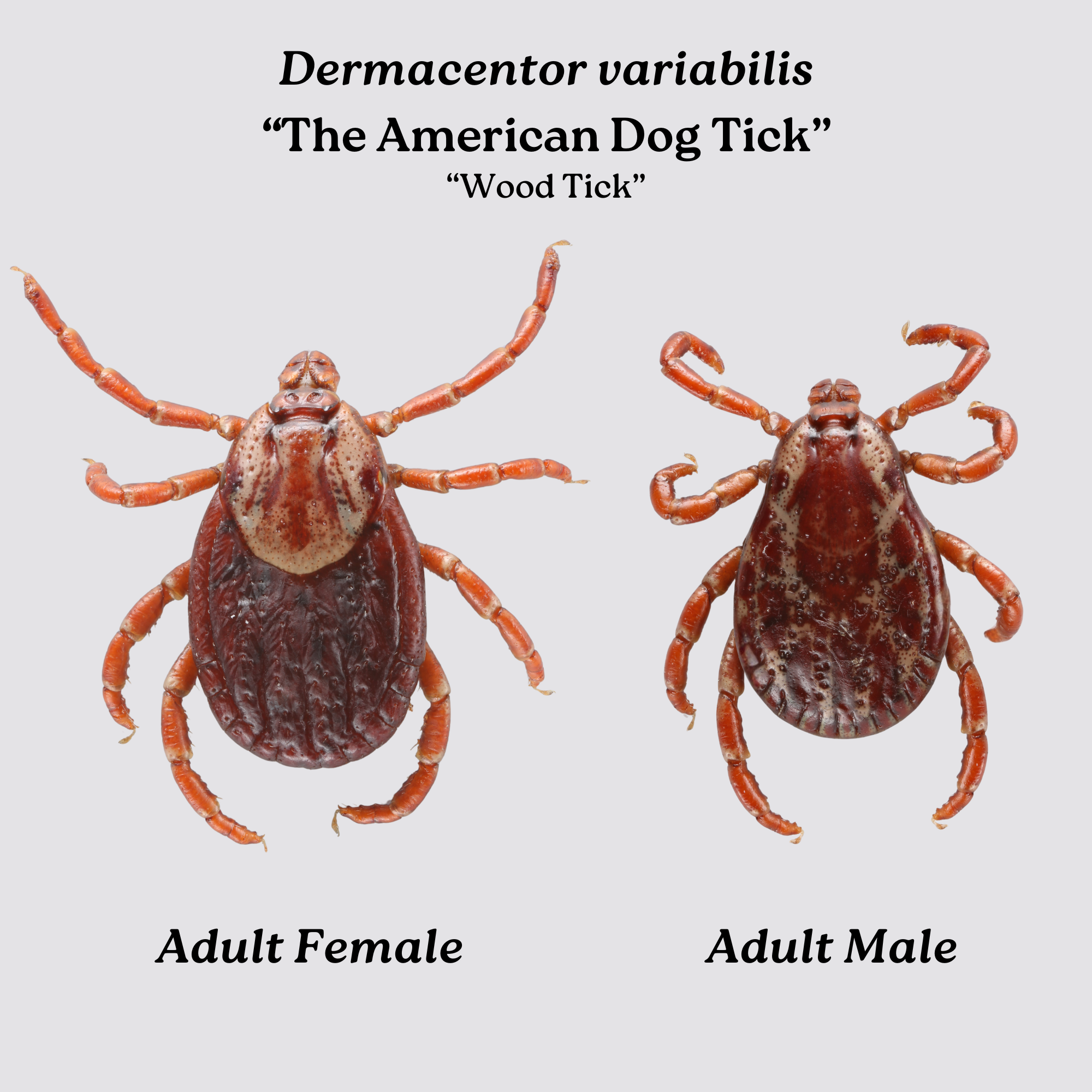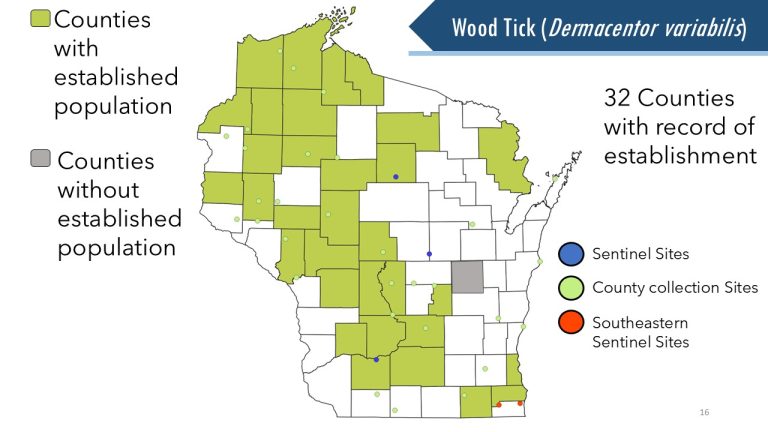Dermacentor variabilis is often referred to as the wood tick in Wisconsin, but is more commonly known as the American dog tick in other parts of the country. This tick has not been associated with disease transmission here, although it can transmit the bacteria causing Rocky Mountain spotted fever and tularemia, also known as rabbit fever, in other areas of the United States.
Quick Facts:
Common Names: Wood Tick or American Dog Tick
Scientific Name: Dermacentor variabilis
Pathogens Transmitted: Spotted Fever Group Rickettsiosis (Including Rocky Mountain spotted fever), Tularemia
Medical/Veterinary Importance: In Wisconsin, diseases from the bite of a wood tick are rare.
Geographical Range: is widely distributed east of the Rocky Mountains and also occurs in limited areas west of the Rocky Mountains.
Although the bacteria which causes Lyme disease, Borrelia burgdorferi, has been found in wood ticks, this tick does not pass the bacteria to humans or other hosts. At this point, there is no scientific evidence that wood ticks are able to transmit the Lyme disease bacterium.


Top row: nymph of the wood tick. Bottom row: female and male wood ticks.
The adults of this species are very common on humans and on dogs and cats. The immatures (larvae and nymphs) almost never bite people, but are common on mice, chipmunks and other small wild animals. The species is widely distributed in Wisconsin, occurring in wooded areas but also in grassy meadows and along roads and paths.